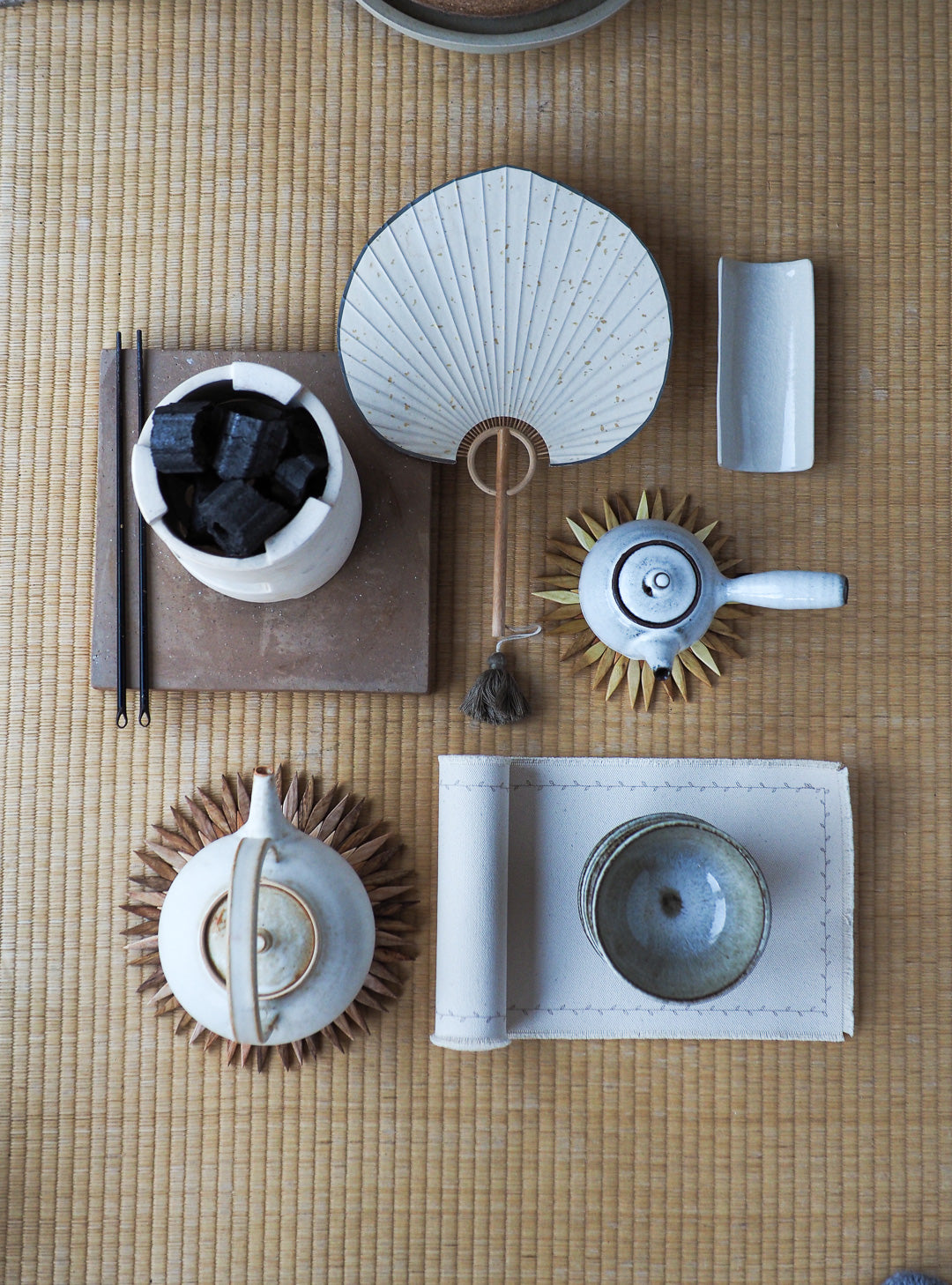
Tea space thrives with daily nurturing
Tea space, like a living entity, thrives with daily nurturing.
A tea space is more than just a physical setting for drinking tea; it is a living entity, shaped and sustained by those who engage with it. Much like a garden that flourishes through care and attention, a tea space evolves through daily nurturing — each action, each object, and each moment leaving its subtle mark. It is a space that resonates with intention, quietness, and balance, offering a sense of harmony to those who enter.
At first glance, a tea space may appear simple: a place to sit, a pot to brew, and a bowl to drink from. But beneath this surface, there is a depth that comes from the interplay between objects, the environment, and the people who gather. Each element, no matter how small, has a role to play. The texture of the tea cloth, the smoothness of the teapot, the weight of the bowl — all contribute to the atmosphere. These objects, whether handcrafted or chosen with care, breathe life into the space, grounding it in purpose and meaning.

Just as a garden needs tending, a tea space thrives on attention. This doesn't mean that it demands constant activity or change. On the contrary, it benefits from stillness, from moments of quiet observation. The simple act of wiping a table, straightening a mat, or refilling the tea jar can be part of this nurturing process. These small gestures may seem insignificant, but they bring with them a certain mindfulness that accumulates over time. Through these actions, the space becomes infused with the energy and care of its creator and users, making it alive in the truest sense of the word.
The beauty of a tea space lies in its dynamic nature. It is not static, nor does it remain untouched. It shifts with the seasons, with the light that filters through the window at different times of day, with the hands that arrange and rearrange its elements. Sometimes the space is full, brimming with the energy of people coming together to share tea. At other times, it is empty and quiet, waiting for the next moment of connection. This ebb and flow mirrors the rhythm of life itself — the balance of action and rest, of fullness and emptiness.

In this way, the tea space reflects a delicate balance between functionality and beauty. Each object in the space serves a purpose, yet it also exists as an expression of elegance. A tea bowl is not merely something to drink from; it is an invitation to pause, to feel the weight of the clay, to appreciate its form. This balance between utility and aesthetics is what makes a tea space feel whole, where nothing is superfluous, and everything contributes to the overall harmony.
When we nurture a tea space, we are also nurturing ourselves. The space becomes a mirror for our internal state — when we tend to it with care and mindfulness, it reflects that same sense of peace back to us. Over time, the ritual of nurturing the tea space and being present within it becomes a practice in itself, one that grounds us in the moment and connects us to the simplicity and beauty of the everyday.

To treat a tea space as a living entity is to honor the subtle energies that flow through it. It is to recognize that the space, like any living being, thrives on care, attention, and love. And just as we evolve, so too does the space, responding to our presence and growing with us on our journey.
In the end, the tea space becomes a sanctuary — not just a place to drink tea, but a place to return to, to find quiet amidst the noise of life. It is a living entity, but it is also a reflection of the values we hold dear: simplicity, beauty, and the quiet joy of being present. Through the daily act of nurturing it, we cultivate not only a space but a way of being, one that invites us to slow down, to appreciate, and to connect — with ourselves, with others, and with the world around us.
